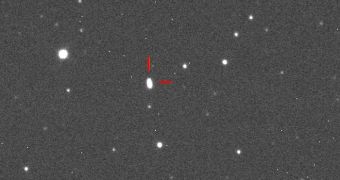The asteroid 2012 LZ1, which gave Earth a close shave on June 14, is apparently much larger than astronomers calculated. Predictions for the flyby held that, were the object to hit, it would have caused only local damage. Now, experts say that the effects may have been significantly worse.
Since the object was discovered just 4 days before its pass, on June 10, astronomers did not have much time to study it, except to determine whether it posed a risk to Earth or not. Initial measurements placed its diameter at around 502 meters (1,650 feet).
One puzzling feature that surprised astronomers was that the space rock was very bright for an object of this size. As it turns out, this was due to the fact that 2012 LZ1 is, in fact, nearly twice as large as initially calculated.
According to predictions made by astronomers at the time of detection, the rock would have not produced any significant global damage, if it had miraculously changed its trajectory, and impacted Earth. Based on the new measurements, these predictions would have been invalid.
Astronomers now say that the asteroid may have caused worldwide devastation, perhaps at the level that could be classified as an extinction event. The new observations were conducted using the Arecibo Observatory in Puerto Rico, which conducts radio surveys of the night sky.
The refined data indicate that the space rock is actually quite dark, and that it has a diameter of about 1 kilometer (0.6 miles). Scientists widely believe that any impactor larger than a kilometer has the potential to trigger global extinction events.
“This object turned out to be quite a bit bigger than we expected, which shows how important radar observations can be, because we’re still learning a lot about the population of asteroids,” Arecibo Observatory expert Dr. Ellen Howell says.
Astronomer Rob McNaught, from the Siding Spring Observatory in Australia, was the one who discovered 2012 LZ1. At its point of closest approach, the object passed within 5.3 million kilometers (3.35 million) miles away from Earth.
The object will not be a threat to our planet for the next 750 years or so. The next time it passes by Earth will be on June 12, 2053, when the closest distance between the two objects will be about 3 times larger than this year, Astrobiology Magazine reports.
“The sensitivity of our radar has permitted us to measure this asteroid’s properties and determine that it will not impact the Earth at least in the next 750 years,” explains the Director of Planetary Radar Sciences at Arecibo Observatory, Dr. Mike Nolan.

 14 DAY TRIAL //
14 DAY TRIAL //